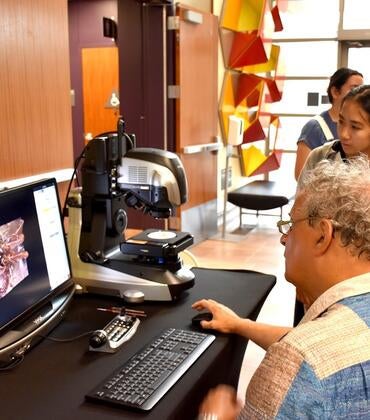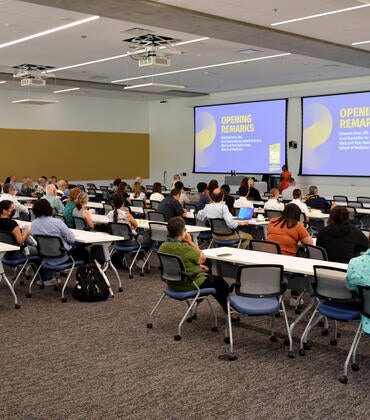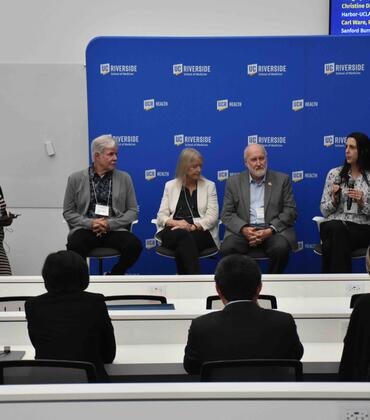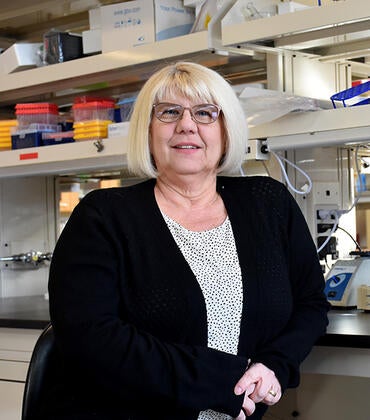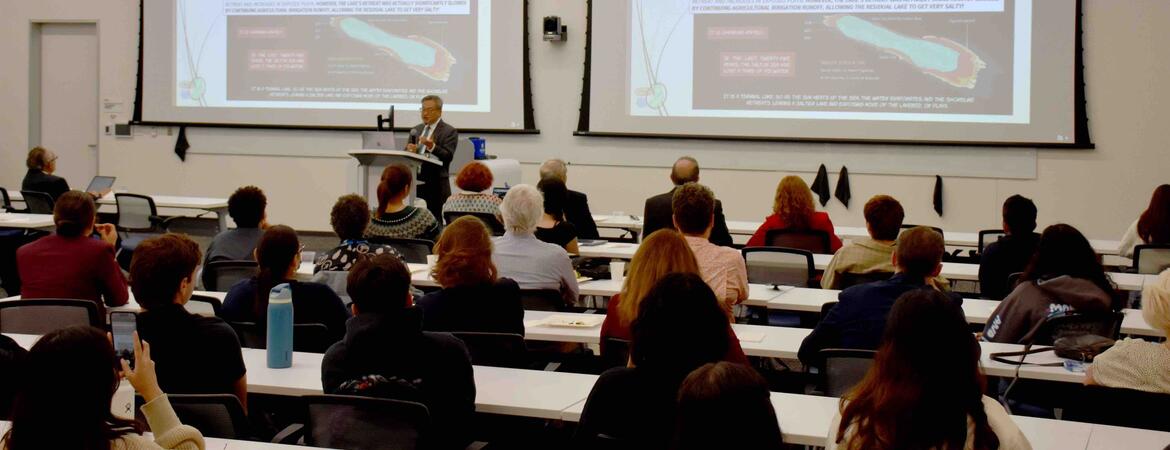
For residents of the Imperial Valley living with asthma, there may be a surprising cause: dust from the nearby Salton Sea. David Lo, MD, PhD, distinguished professor in the Division of Biomedical Sciences at the UC Riverside School of Medicine, has focused on the local environmental issue in his recent research, which he presented at the 2025 Thomas and Salma Haider Biomedical Breakthrough Lecture on October 9. The annual event brings prominent biomedical researchers to Riverside to present their work, this year drawing around 100 attendees.
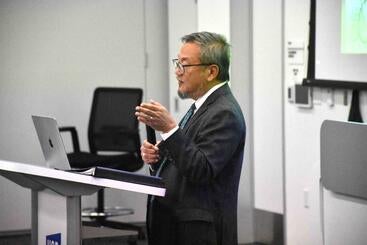
Longtime SOM supporter Thomas Haider, MD, said in his welcome remarks that Lo’s lecture, “Toxic Ecologies: The Salton Sea, Asthma, and Miasma,” was a “very important topic, not just for the Inland Empire, but all of California.” He said that Lo’s work made him aware of the negative effects of Salton Sea dust, a critical issue for the community.
The incidence of asthma in residents around the Salton Sea, particularly the Imperial Valley, is disproportionately high compared to the rest of California. Through Lo’s research, he explained that dust from the Salton Sea contains a toxin called lipopolysaccharide found on the exterior of bacteria. As the Salton Sea evaporates and bacteria die, this toxin seeps into the soil and turns to dust, which is then picked up by southern-blowing winds and inhaled by residents of the Imperial Valley. He found that the lung inflammation is an innate immune response to the Salton Sea dust.
Lo’s conclusion prompted him to recategorize the cause of asthma in the Salton Sea from germ to miasma--essentially, the idea that “bad air” causes disease. Rather than bacterial infection or colonization being the root problem, “the disease we are seeing is caused by dust containing those bacterial components leading to chronic persistent inflammation,” he said.
To address this health crisis, Lo collaborated with interdisciplinary partners to create graphic narratives to help educate Salton Sea communities about the danger of the Salton Sea’s dust. “I like the idea of graphic narratives being effective tools for communicating even the most complex biomedical information,” Lo said.
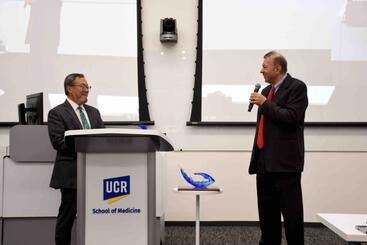
Lo added that buying air filters, duct tape, and a box fan only provides a temporary means to decrease indoor dust levels. “Although, it must be on at all times,” he said.
Following the lecture, Haider presented Lo with a plaque in recognition of Lo’s longstanding scholarship. The plaque, chosen by Salma Haider, featured the Chinese ruyi symbol in the form of a blue crystal wave, referencing Lo’s breakthrough research in the Salton Sea. Deborah Deas, MD, MPH, the vice chancellor for health sciences and the Mark and Pam Rubin dean of the School of Medicine, also presented Lo with an honorary certificate.
When reflecting on his work at the Salton Sea, “What made it so exciting is the idea that this is having an impact on the communities we serve as a medical school,” said Lo. “It really embodies the mission of the School of Medicine.”
